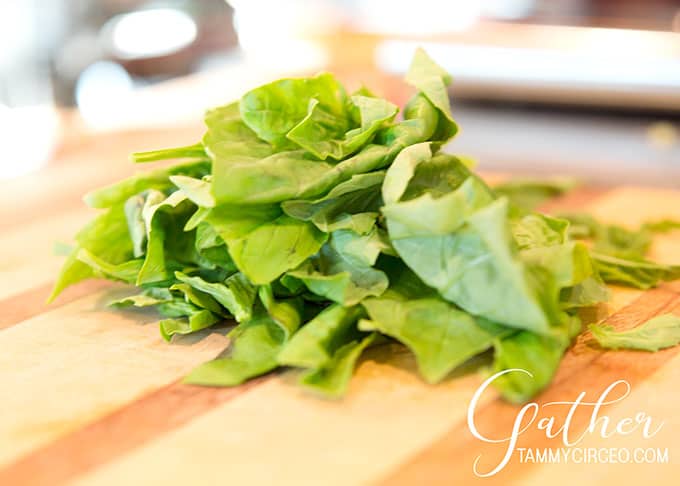Caponata is a traditional eggplant dish that originated in Sicily. It's easy to believe given that all of the ingredients could be considered native to Sicily or at least easily grown there ... eggplant,


Some recipes I researched called for the eggplant to be fried in cubes and while I do think that would add another level of flavor, I chose to sauté it with the garlic and onions. I still achieved a caramelization on it so I was fine with that shortcut. After sauteeing the onions, garlic, and eggplant, I added tomatoes (a few fresh and also some canned, but you can use all fresh, all canned, or even a tomato puree), red wine vinegar, and capers and allowed it to continue cooking until it was tender.
Recipe

Roasted Pork Chop with Caponata
Ingredients
- 4 8- ounce pork chops seasoned with salt and pepper
- 8 ounces pasta such as orecchiette or small shells cooked till just before tender.
- 3 cups of caponata recipe follows
- ½ cup black olive tapenade usually available on the same aisle with condiments, but also sometimes available in a well-stocked deli department. OR make your own fresh!
FOR THE CAPONATA:
- 5 tablespoons olive oil
- 1½ pound eggplant unpeeled, cut into ½ -inch cubes
- 4 large garlic cloves chopped
- 1 medium onion cubed
- 1 14- ounce can of tomatoes or 14 ounces of chopped fresh tomatoes
- 3 tablespoons red wine vinegar
- 2 tablespoons capers drained
- ⅓ cup chopped fresh basil
- ⅓ cup toasted pine nuts Buy them unroasted and put them in a dry pan on medium heat to toast. Watch carefully, shake the pan occasionally, and let them come to a golden color.
Instructions
- Make the caponata first by heating the oil in a large pot and adding the eggplant, onion, and garlic cloves. Sauté until eggplant is soft and brown, about 15 minutes. Add diced tomatoes with juice, vinegar, and drained capers. Cover and simmer until eggplant and onion are tender, stirring occasionally, about 12 minutes. Season with salt and pepper, mix in fresh basil, and add the toasted pine nuts.
- Put the water on for the pasta and continue with the pork chop preparation. When the water comes to a boil, cook the pasta according to the package directions. If you’re lucky, you’ll get the pork chops in the oven while the water comes to a boil.
- For the pork chops: preheat the oven to 375˚F, heat a pan over medium-high, then pan-sear the pork chops on both sides. Transfer the pork chops to the oven and roast until the internal temperature is 130˚F. This is not the finish temperature, but the pork will continue cooking after it is removed from the oven so if it reaches the finish temperature in the oven, it will be dry and tasteless at the table.
- When the pasta is just barely done, add it to the caponata and stir it together. Keep it over low heat so the pasta comes to al dente. Be careful not to overcook it. If you are cooking gluten-free pasta, be extra careful because it seems to cook faster. Another tip for gluten-free pasta is to rinse it with hot water after cooking to remove the extra starch.
- To serve: Spoon the caponata pasta onto a wide soup plate. Spread olive tapenade on the top of the pork chops and place one on top of each plate of pasta. Sprinkle with julienned fresh basil.







Comments
No Comments